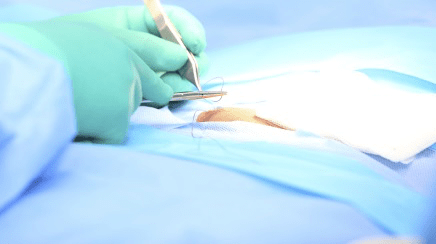
Open hernia repair techniques have traditionally been used for all hernia repairs before the advent of laparoscopy. Although still widely employed world-wide, in our practice they are reserved for the treatment of small umbilical hernias, inguinal hernias in patients who do not want mesh or require mesh removal, or treatment of very large abdominal hernias, in which minimally invasive techniques are not possible or safe.
Umbilical and ventral hernias – Patients with small umbilical or ventral hernias (size of the defect less than 2 cm) and BMI less than 30 kg/m2 may benefit from primary hernia repair (open closure of the defect with resorbable sutures and without mesh). These operations can be performed through a small incision overlying the bulge, which leads to an esthetically pleasing scar once the healing is complete. In patients with BMI>30 or larger hernias, mesh reinforcement is necessary to decrease the chance of hernia recurrence.
Inguinal hernias – Although most inguinal hernias are repaired in minimally invasive fashion, certain circumstances warrant an open repair. These include hernias in patients with contraindications to general anesthesia, in which the hernia can be repaired in open fashion with local anesthesia only, or local anesthesia combined with light sedation. Other possible situations include hernia recurrence after previous laparoscopic or robotic repair, and previous pelvic surgery (prostate removal). Lastly, patients looking for a no-mesh inguinal hernia repair can benefit from an open tissue repair.
Chronic groin pain – The etiology of chronic groin pain following a previous inguinal hernia repair is multifactorial and often complex. However, if it is determined that a previously implanted mesh is responsible for the pain, open mesh removal combined with a tissue repair may lead to improvement of symptoms and increased quality of life.
Incisional hernias – Patients with very large incisional hernias or hernia recurrences following previous repairs with mesh may require open abdominal wall reconstruction to achieve a stable and functional abdominal wall. The operative technique is individualized based on the patient’s characteristics and associated medical problems, size of hernia defect, and goals for the repair.
